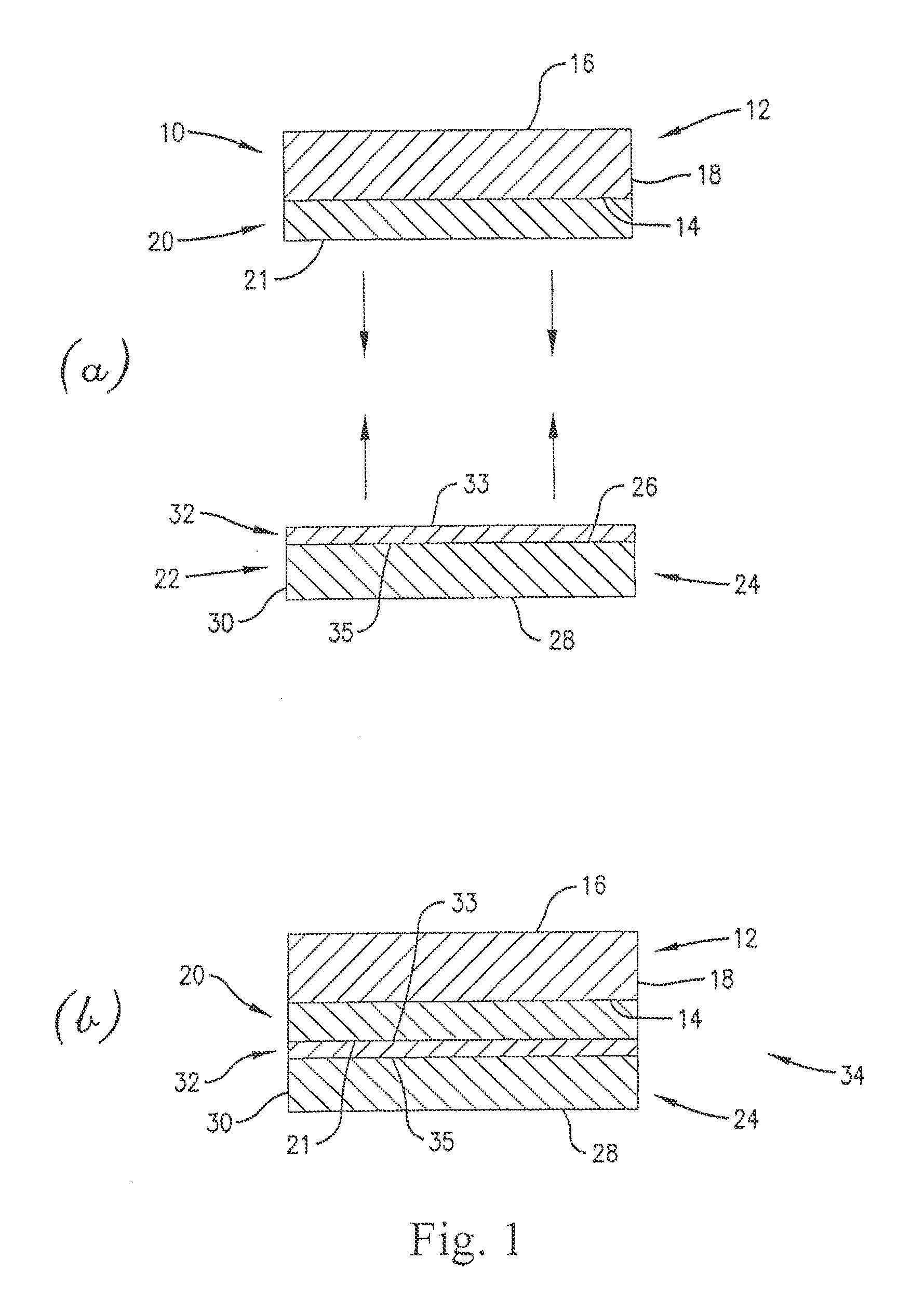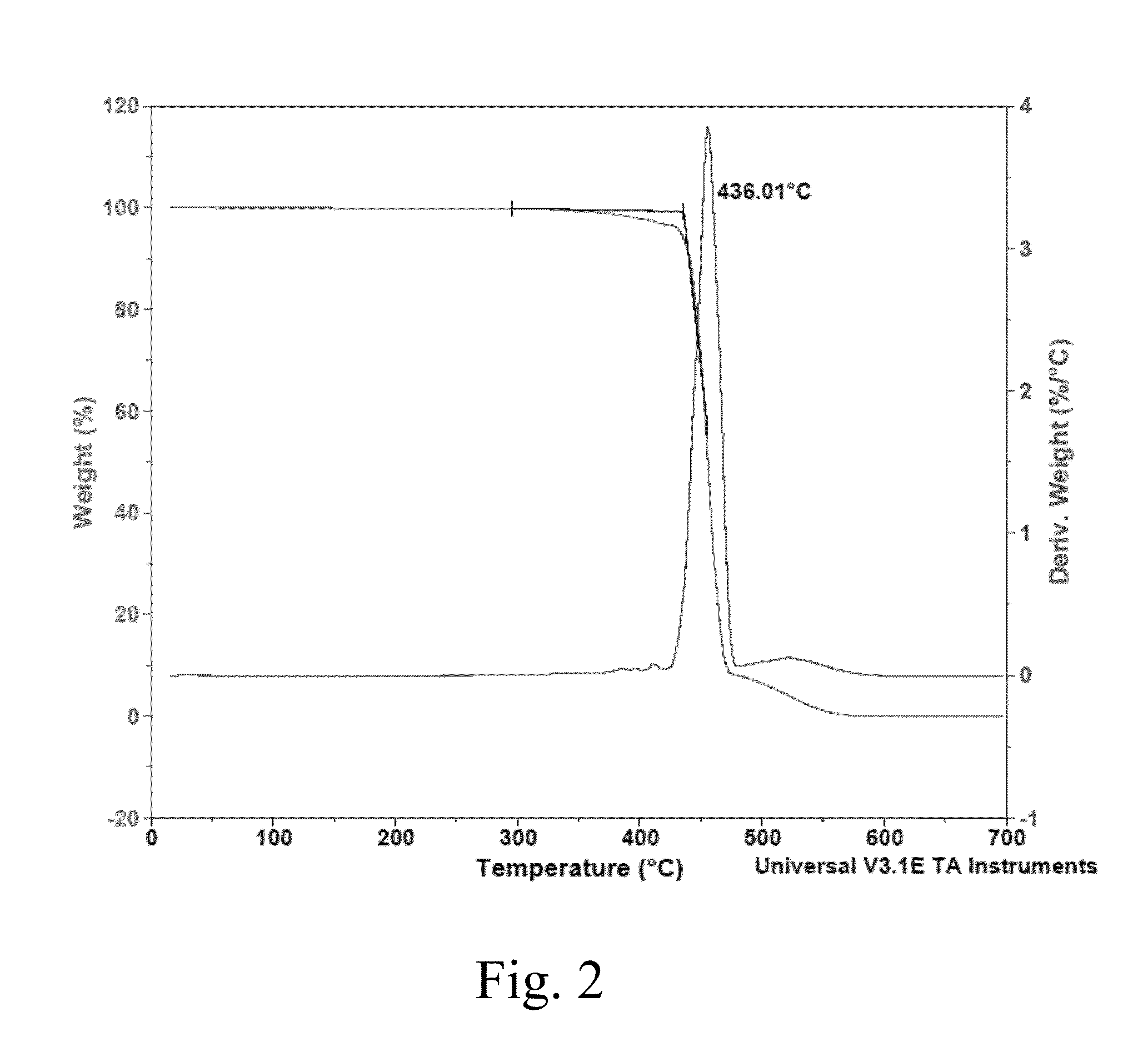Cyclic olefin polymer compositions and polysiloxane release layers for use in temporary wafer bonding processes
a technology of cyclic olefin polymer composition and release layer, which is applied in the direction of synthetic resin layered products, semiconductor/solid-state device details, other domestic articles, etc., can solve the problems of difficult to clean the substrates after processing, no single technology/material can meet all these requirements, and difficult to obtain a clear solution
- Summary
- Abstract
- Description
- Claims
- Application Information
AI Technical Summary
Benefits of technology
Problems solved by technology
Method used
Image
Examples
example 1
Formulation of a 0.5% ECMS-327 Siloxane Solution
[0059]To a 250 ml glass bottle, 0.02 gram of K-PURE® TAG-2689 (King Industries Inc. Norwalk, Conn.) and 19.9 grams of propylene glycol monomethyl ether (“PGME,” Ultra Pure, Inc., Castroville, Calif.) were added. The solution was mixed for 5-10 minutes until all of K-PURE® TAG-2689 dissolved. Next, 79.58 grams of d-limonene (Florida Chemical Co. Winter Haven, Fla.) and 0.5 gram of ECMS-327 (polysiloxane, structure shown below; Gelest, Morrisville, Pa.) were then added to the solution. The final solution was mixed for 30-60 minutes until all of polysiloxane was dissolved, after which the solution was filtered once through 0.1-μm disk filter (Whatman Inc., Florham Park N.J.). The total concentration of polysiloxane in this solution was 0.5% by weight.
example 2
Formulation of a 0.5% ECMS-924 Siloxane Solution
[0060]To a 250 ml glass bottle, 0.02 gram of K-PURE® TAG-2689 (King Industries Inc. Norwalk, Conn.) and 19.9 grams of PGME (Ultra Pure, Inc., Castroville, Calif.) were added. The solution was mixed for 5-10 minutes until all of K-PURE® TAG-2689 dissolved. 79.58 grams of d-limonene (Florida Chemical Co. Winter Haven, Fla.) and 0.5 gram of ECMS-924 (polysiloxane, Gelest, Morrisville, Pa.) were then added to the solution. (The structure of this polymer is similar to that shown for Example 1, with the difference in numbers denoting a difference in molecular weights.) The final solution was mixed for 30-60 minutes until all of polysiloxane dissolved and then was filtered once through 0.1-μm disk filter (Whatman Inc., Florham Park N.J.). The total concentration of polysiloxane in this solution was 0.5% by weight.
example 3
Formulation of a 0.5% VDT-5035 Siloxane Solution
[0061]To a 250 ml glass bottle, 100 grams of PGME (Ultra Pure, Inc., Castroville, Calif.), 0.5 gram of VDT-5035 (Gelest, structure shown below; Morrisville, Pa.), and 0.025 gram of 1,1′-azobis(cyclohexanecarbonitrile) (Sigma-Aldrich, St Louis, Mo.) were added. The final solution was mixed for 30-60 minutes until all of polysiloxane dissolved. The total concentration of polysiloxane in this solution was about 0.5% by weight.
PUM
| Property | Measurement | Unit |
|---|---|---|
| Temperature | aaaaa | aaaaa |
| Temperature | aaaaa | aaaaa |
| Time | aaaaa | aaaaa |
Abstract
Description
Claims
Application Information
 Login to View More
Login to View More - R&D
- Intellectual Property
- Life Sciences
- Materials
- Tech Scout
- Unparalleled Data Quality
- Higher Quality Content
- 60% Fewer Hallucinations
Browse by: Latest US Patents, China's latest patents, Technical Efficacy Thesaurus, Application Domain, Technology Topic, Popular Technical Reports.
© 2025 PatSnap. All rights reserved.Legal|Privacy policy|Modern Slavery Act Transparency Statement|Sitemap|About US| Contact US: help@patsnap.com



